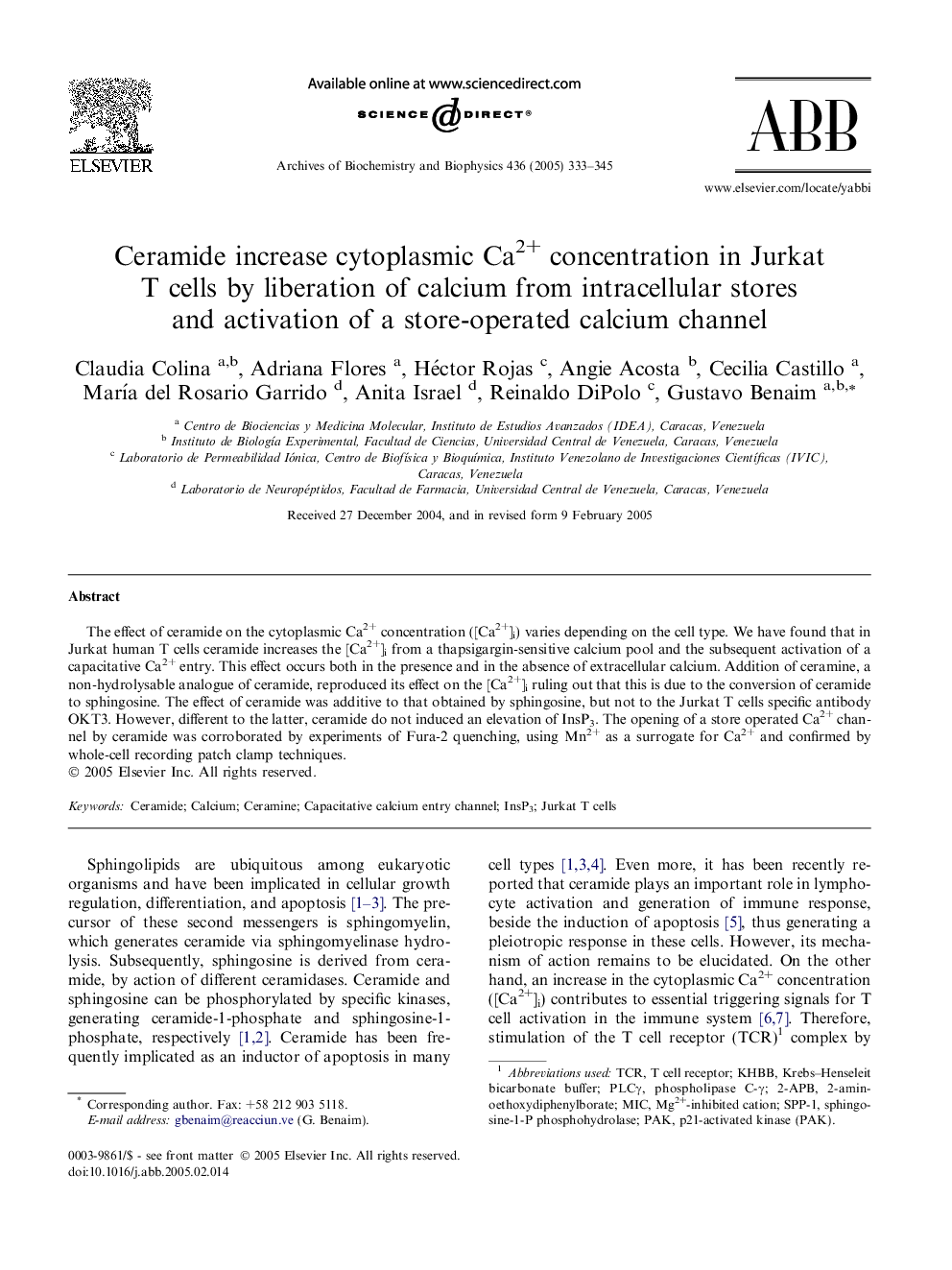| Article ID | Journal | Published Year | Pages | File Type |
|---|---|---|---|---|
| 9882251 | Archives of Biochemistry and Biophysics | 2005 | 13 Pages |
Abstract
The effect of ceramide on the cytoplasmic Ca2+ concentration ([Ca2+]i) varies depending on the cell type. We have found that in Jurkat human T cells ceramide increases the [Ca2+]i from a thapsigargin-sensitive calcium pool and the subsequent activation of a capacitative Ca2+ entry. This effect occurs both in the presence and in the absence of extracellular calcium. Addition of ceramine, a non-hydrolysable analogue of ceramide, reproduced its effect on the [Ca2+]i ruling out that this is due to the conversion of ceramide to sphingosine. The effect of ceramide was additive to that obtained by sphingosine, but not to the Jurkat T cells specific antibody OKT3. However, different to the latter, ceramide do not induced an elevation of InsP3. The opening of a store operated Ca2+ channel by ceramide was corroborated by experiments of Fura-2 quenching, using Mn2+ as a surrogate for Ca2+ and confirmed by whole-cell recording patch clamp techniques.
Keywords
Related Topics
Life Sciences
Biochemistry, Genetics and Molecular Biology
Biochemistry
Authors
Claudia Colina, Adriana Flores, Héctor Rojas, Angie Acosta, Cecilia Castillo, MarÃa del Rosario Garrido, Anita Israel, Reinaldo DiPolo, Gustavo Benaim,
